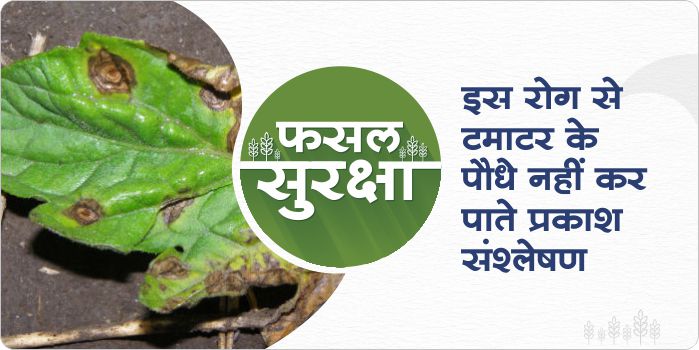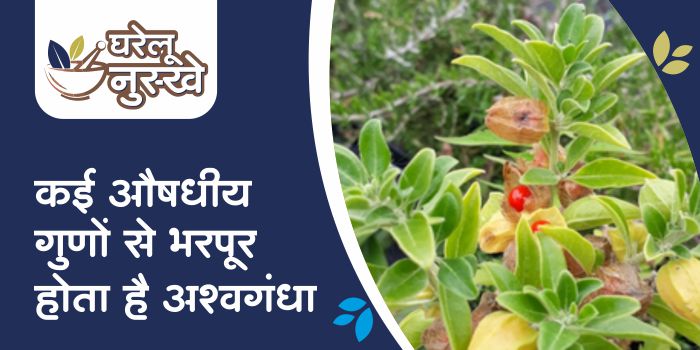- Usually this disease occurs on bitter gourd leaves, which affects the leaf’s lower and upper part.
- This disease can be identified by the formation of yellow to white colored powder on the upper and lower surface of bitter gourd leaves.
- To managing this use, Azoxystrobin 11%+Tebuconazole 18.3% SC @ 300 ml /acre or Azoxystrobin @ 300 ml/acre
- Spray Trichoderma viride @ 500 gram/acre+Pseudomonas fluorescens @ 250 gram/acre as a biological treatment
Identification and prevention of bacterial spot in tomato
- This disease is caused by bacteria
- The symptoms of this disease are found in all parts of the plant and its effect on the leaves is quite visible.
- Initially, the symptoms of the disease are seen in the form of small brown colored, boat shaped spots. Which grows in size, scorches entire leaves causing the tissue to die and the leaves losing its green color.
- This severely affects Photosynthesis, due to which the seeds of the affected plant have low germination capacity.
- Spray Tebuconazole 10% + Sulfur 65% WG @ 500 gram/acre or Kasugamycin 5% + Copper Oxychloride 45% WP @ 300 gram/acre or Kasugamycin 3% SL @ 400 ml/acre.
- Biological treatment: – Spray Pseudomonas fluorescens @ 250 gram/acre as a biological treatment.
Alternatoria leaf blight disease will damage crops, learn management measures
- Alternaria leaf spot disease appears in any crop only after sowing.
- Due to this disease, brown colored round spots appear on the leaves. These spots grow slowly and finally the affected leaves dry up and fall.
- For prevention of this disease, spray Carbdenzium 12% + Mancozeb 63% WP @ 300 g / acre or Ketazine @ 300 g / acre.
- Spraying of Trichoderma viridi @ 500 g / acre as a biological treatment.
Temperature will rise in Madhya Pradesh with Hot waves, know weather forecast
There is a possibility of a heat wave in many areas of central India. Due to this, the temperature is expected to increase in most areas of Madhya Pradesh. There is a possibility of a heat wave in the next one or two days in the areas of Vidarbha and Marathwada along with Madhya Pradesh.
Video Source: Skymet Weather
ShareAshwagandha gives many health benefits
- Ashwagandha is a miraculous medicinal herb. Apart from protecting the body from diseases, it also keeps the mind healthy.
- Consuming ashwagandha reduces the risk of heart related diseases.
- The antioxidant and anti-inflammatory properties found in it are helpful in lowering cholesterol.
- Consuming it strengthens heart muscles and reduces bad cholesterol levels .
Temperature will increase significantly in these states along with Madhya Pradesh, know weather forecast
The pre-monsoon activities that were going on in Central India. It is now over and there is no possibility of looking any further. Now this area will remain completely dry. In Rajasthan as well as some areas of Madhya Pradesh and Maharashtra, heat waves may occur during the next two-three days. The temperature figure can cross 40 degrees. Now the temperature will increase significantly in these areas.
Source: Skymet Video
ShareAfter the rain these problems will increase in cucumber crop
- Cucumber crop is cucurbits crop , if there is a sudden change in the weather, the crop of cucurbits family suffers a lot of damage.
- Alternaria blight , powdery mildew, downy mildew can attack due to weather changes.
- Be sure to use the following products to control them.
- Alternaria leaf spot: – For the prevention of this disease, spraynCarbedenium 12% + Mancozeb 63% WP @ 300gram/acre or Ketazine @ 300gram/acre
- Powdery mildew: – Azestrobin 11% + Tebuconazole 18.3% SC @ 300 ml/acre or azoxystrobin @ 300 ml/acre for its management.
- Downy mildew: – Spray of Tebuconazole 50% + Trifloxystrobin 25% WG @ 150gram/acre or Metalaxyl 4% + Mancozeb 64% WP @ 600gram/acre or Chlorothalonil 75% WP @ 400gram/acre
- Spray Trichoderma viride @ 500 gram/acre + Pseudomonas fluorescens @ 250 gram/acre as a biological treatment
- Follow the crop cycle and keep clean in the field.
Changes in the weather can cause a bad effect on the moong crop
- In some places of Madhya Pradesh, the excessive amount of moisture in the soil due to rain, the attack of fungal diseases can be very high.
- In green gram crop , germination stage is more likely to cause dumping off, Cercospora leaf spot disease.
- To control this, it is very important to use the necessary products on time.
- Cercospora leaf spot disease: – Thiophanate methyl 70% W/W @ 500 gram/acre or Chlorothalonil 75% WP @ 400 gram/acre
- Dumping off: – Carbendazim 12% + Mancozeb 63% @ 30 gram / pump or Thiophanate methyl 70% W /W @ 50 gram / pump or Mancozeb 64% + Metalaxyl 8% WP @ 60 gram/pump
- Use pseudomonas fluorescens @ 250 gram/acre as a biological treatment.
What were the prices of crops in the mandis of Madhya Pradesh on March 25
| Market | Crop | Minimum | Maximum | Modal |
| Harsud | Soyabean | 3800 | 5711 | 5550 |
| Harsud | Tuwar | 4702 | 5702 | 5401 |
| Harsud | Wheat | 1601 | 1700 | 1681 |
| Harsud | Chana | 4100 | 4619 | 4551 |
| Harsud | Makka | 1244 | 1281 | 1260 |
| Harsud | Sarso | 4200 | 4555 | 4200 |
| Khargone | Cotton | 4800 | 6465 | 5850 |
| Khargone | Wheat | 1650 | 1910 | 1720 |
| Khargone | Chana | 4801 | 4655 | 4411 |
| Khargone | Makka | 1226 | 1399 | 1245 |
| Khargone | Soyabean | 5401 | 5690 | 5651 |
| Khargone | Dollar Channa | 7150 | 7805 | 7650 |
| Khargone | Tuwar | 5000 | 5891 | 5611 |
| Khargone | Sarso | 4601 | 4601 | 4601 |
These diseases can be caused due to change in weather in watermelon crop
- Due to sudden change in the weather, there has been a lot of rain,due to this, there is a high probability to attack of fungal diseases in the watermelon crop.
- At this time in watermelon crop, Alternaria blight, gummy stem blight, wilt disease,can occur . can be used to control the effective products on these diseases.
- By using these products, the crop can be saved from diseases occurring in the watermelon crop.
- Alternaria leaf spot: – For the prevention of this disease, spraying of Carbendazim 12% + Mancozeb 63% WP @ 300gram/acre or Ketazine @ 300 gram/acre
- Gummy stem blight / Wilt disease : – Kasugamycin 5% + Copper Oxychloride 45% WP @ 300 gram/acre or chlorothalonil 75% WP @ 300 gram / acre or Tebuconazole @ 25.9% EC @ 200 ml/acre
- As a biological treatment use Pseudomonas fluorescens @ 250 gram/acre or Trichoderma viride @ 500 gram/acre.









